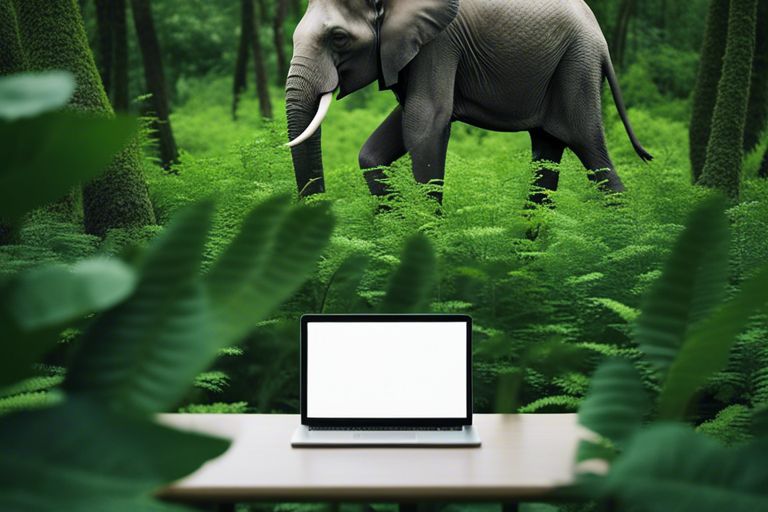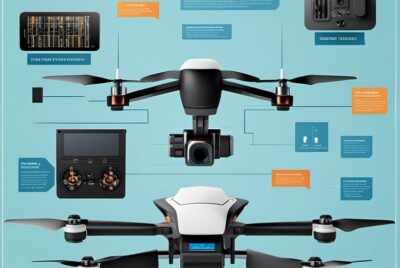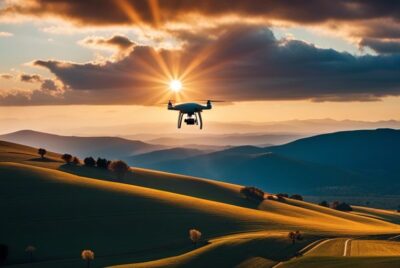“Drones and Wildlife Conservation – Protecting Endangered Species”
This innovative era of technology has revolutionized the way wildlife conservation is approached. Drones, once primarily associated with military use, are now invaluable tools in protecting endangered species and their habitats. With their ability to reach remote areas, gather data, and monitor wildlife without disturbance, drones have become essential in conservation efforts worldwide. In this blog post, we will explore into the crucial role drones play in safeguarding endangered species and how their utilization is shaping the future of wildlife conservation.
Understanding Drones and Their Capabilities
To effectively protect endangered species and monitor wildlife, it is crucial to understand drones and their capabilities in the realm of conservation. Drones, also known as unmanned aerial vehicles (UAVs), have revolutionized the way conservationists observe, track, and protect wildlife in remote and hard-to-reach areas.
These sophisticated aerial vehicles equipped with various sensors and cameras can provide real-time data, high-resolution images, and valuable insights into wildlife populations and habitats. By harnessing the power of drones, conservationists can enhance their efforts in preserving and safeguarding endangered species across the globe.
Types of Drones Used in Conservation Efforts
To effectively carry out conservation activities, different types of drones are utilized based on specific requirements. These drones range from fixed-wing drones that cover large areas efficiently to rotary drones that can hover and maneuver in tight spaces with precision. Utilizing drones in wildlife conservation allows for a non-intrusive approach to monitor wildlife and gather crucial data for research and protection purposes.
- Fixed-wing drones – Cover large areas efficiently
- Rotary drones – Maneuver in tight spaces with precision
- Hybrid drones – Combine features of both fixed-wing and rotary drones
- Lighter-than-air drones – Ideal for low-altitude, long-endurance missions
- Solar-powered drones – Enable extended flight times for prolonged monitoring
Any conservation strategy must consider the most suitable type of drone based on the terrain, objectives, and wildlife species under observation. It is essential to choose the right drone to optimize data collection and conservation efforts effectively.
Innovative Features and Technological Advances
For wildlife conservation, drones come equipped with innovative features and technological advances that enhance their capabilities. These include thermal imaging cameras for night-time monitoring, GPS tracking for precise location data, and artificial intelligence for analyzing imagery and detecting changes in wildlife behavior.
Innovative features such as obstacle avoidance sensors, long-range communication systems, and automated flight modes further improve the efficiency and safety of drone operations in conservation efforts. With ongoing technological advancements, drones continue to evolve to meet the growing demands of wildlife conservation and protection.
Drones play a pivotal role in wildlife conservation by providing a bird’s eye view of critical habitats, monitoring endangered species, and supporting anti-poaching efforts. These aerial tools have revolutionized the way conservationists work, allowing for more effective, data-driven strategies to safeguard biodiversity and protect our planet’s most vulnerable species.
Application of Drones in Wildlife Conservation
Clearly, drones have revolutionized the way we approach wildlife conservation efforts. These unmanned aerial vehicles have proven to be invaluable tools in protecting endangered species and their habitats. By harnessing the power of technology, conservationists have been able to enhance their monitoring, tracking, and anti-poaching operations with unprecedented precision and efficiency.
Monitoring and Tracking Endangered Species
One of the key applications of drones in wildlife conservation is the monitoring and tracking of endangered species. Drones equipped with high-resolution cameras and GPS technology can survey vast terrains and capture valuable data on animal populations and their movements. This information is crucial for conservationists to understand the behavior patterns of endangered species, assess their population dynamics, and ultimately develop effective conservation strategies to ensure their survival.
Furthermore, drones can access hard-to-reach areas and remote locations without disturbing the wildlife, providing a non-invasive way to monitor elusive species. By utilizing drones for monitoring and tracking, conservationists can gather real-time data and insights that were previously unattainable, enabling them to make informed decisions and take proactive measures to protect endangered species.
Anti-Poaching Operations and Habitat Surveillance
Application of drones in anti-poaching operations and habitat surveillance has been a game-changer in the fight against illegal wildlife trafficking and habitat destruction. Drones can patrol designated areas, detect illegal activities, and even track poachers in real-time, allowing law enforcement agencies and conservationists to respond swiftly and effectively to poaching incidents.
The use of drones in habitat surveillance also enables conservationists to monitor changes in landscapes, detect deforestation, and assess the impact of human activities on wildlife habitats. By leveraging drone technology for anti-poaching operations and habitat surveillance, conservation efforts are bolstered, and endangered species are given a fighting chance for survival in the face of increasing threats.
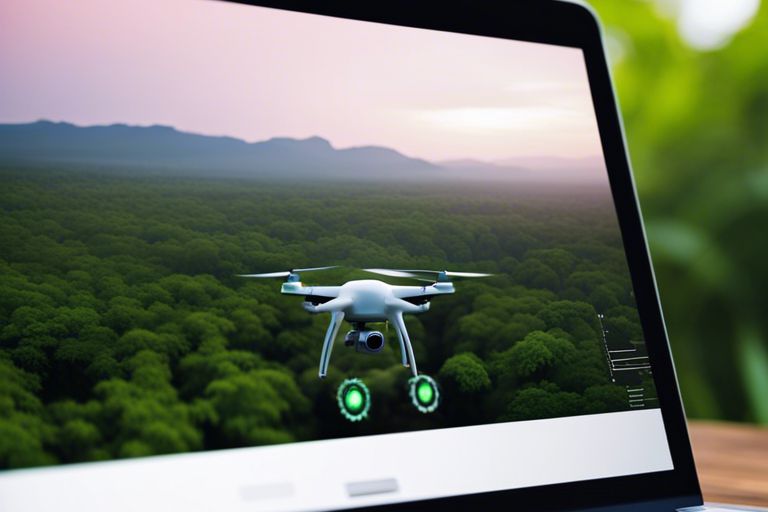
Ethical Considerations and Challenges
Unlike traditional methods of wildlife conservation, the use of drones presents a unique set of ethical considerations and challenges. As technology advances, it becomes crucial for conservationists to navigate these complexities effectively in order to protect endangered species and their habitats.
Minimizing Disturbance to Wildlife
For wildlife conservation efforts utilizing drones, minimizing disturbance to wildlife is a primary concern. The sound and sight of drones can disrupt natural behaviors and cause stress to animals, potentially impacting their well-being. Conservationists must carefully plan drone flights to minimize disturbance, including maintaining a safe distance from wildlife and avoiding nesting areas during sensitive times of the year.
Furthermore, the presence of drones can provoke a response from wildlife that may alter their behavior. It is essential for conservationists to assess the potential impact of drone use on the target species and adjust their monitoring techniques accordingly to ensure minimal disruption.
Legal and Regulatory Hurdles
Considerations surrounding the legal and regulatory framework for drone use in wildlife conservation can present significant challenges. Conservationists must navigate complex laws and regulations regarding airspace, wildlife protection, and data privacy when deploying drones in conservation areas. Compliance with these legal frameworks is essential to ensure the responsible and ethical use of drones for wildlife protection.
Legal and Regulatory Hurdles may vary from region to region, and understanding the specific requirements and restrictions in each area is crucial for successful drone deployment in wildlife conservation efforts. Conservationists must work closely with regulatory bodies and seek appropriate permits to operate drones legally in protected areas.

Future Directions and Potential Developments
Advancements in Drone Technology
Advancements in drone technology hold immense promise for the future of wildlife conservation. From increased flight times to improved camera capabilities, drones are becoming more efficient and effective in monitoring endangered species and their habitats. The development of long-range drones with enhanced battery life allows for extended surveillance missions, providing researchers with a comprehensive understanding of animal behaviors and ecosystem dynamics.
Furthermore, the integration of artificial intelligence and machine learning algorithms into drone systems is revolutionizing the way data is collected and analyzed. These advancements enable drones to autonomously identify and track animals, detect changes in vegetation patterns, and even predict potential threats to wildlife populations. By leveraging these technological innovations, conservationists can make more informed decisions and implement targeted conservation strategies to protect endangered species.
Integrating Drones with Other Conservation Tools
Integrating drones with other conservation tools, such as satellite imagery and ground-based sensors, enhances the monitoring and conservation efforts for endangered species. Drones can capture high-resolution images and videos that complement data obtained from satellites, offering a multi-dimensional view of wildlife habitats. This integration allows for a more comprehensive analysis of environmental changes and enables conservationists to detect illegal activities, such as poaching, more effectively.
This integration also facilitates the coordination of conservation efforts on the ground by providing real-time information to field teams. Drones equipped with thermal imaging cameras can help locate animals in distress or track elusive species, guiding conservationists to prioritize their interventions and allocate resources efficiently. By combining the strengths of drones with other conservation tools, we can enhance the sustainability and impact of wildlife conservation initiatives.
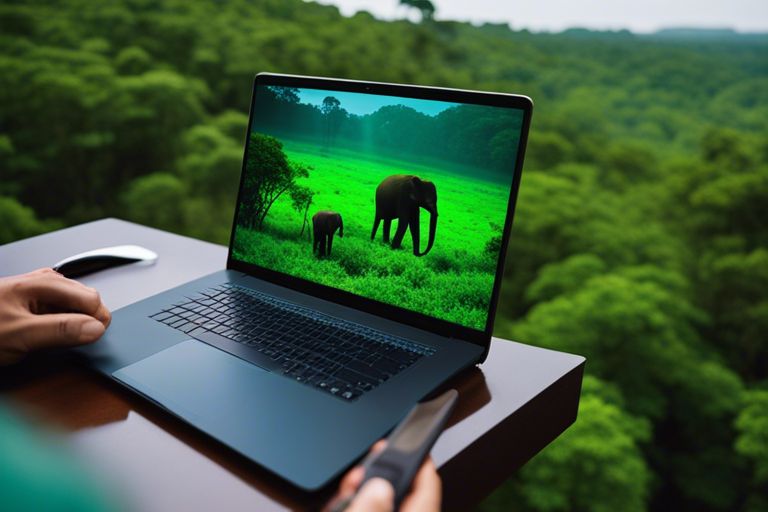
Final Words
Now, it is clear that drones are powerful tools in the fight to protect endangered species and preserve wildlife ecosystems. With their ability to monitor, survey, and deter threats to these vulnerable creatures, drones are revolutionizing the way we approach wildlife conservation efforts. By leveraging this technology effectively and combining it with human expertise, we can make significant strides in safeguarding these endangered species for future generations. It is essential for conservation organizations and governments to embrace the potential of drones and incorporate them into their conservation strategies to ensure the survival of our planet’s precious wildlife.
